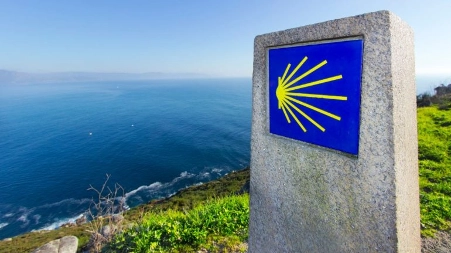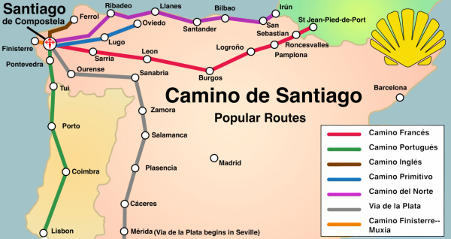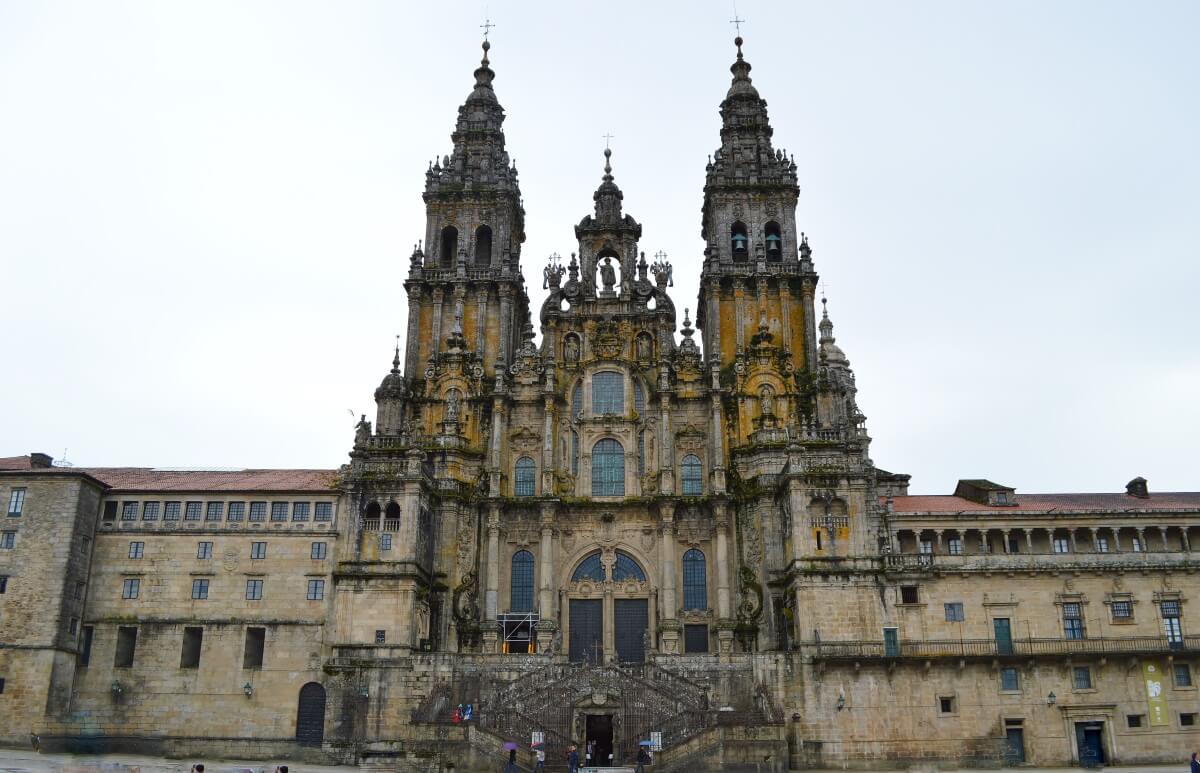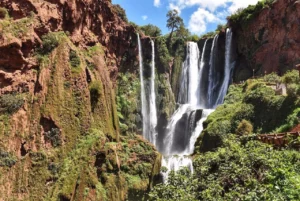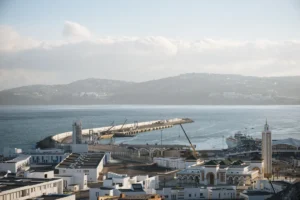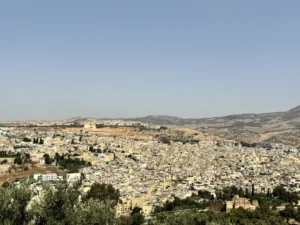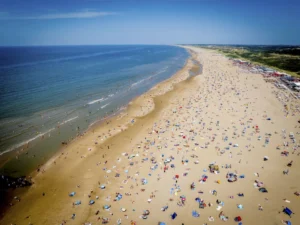The Camino de Santiago is one of the oldest pilgrimage routes in Europe, with deep religious and cultural traditions. Its origin is related to the apostle St. James the Greater and the discovery of his tomb in Galicia. Over the centuries, this route has attracted millions of pilgrims. There are several main routes that offer different experiences and landscapes, each with its own history and appeal.
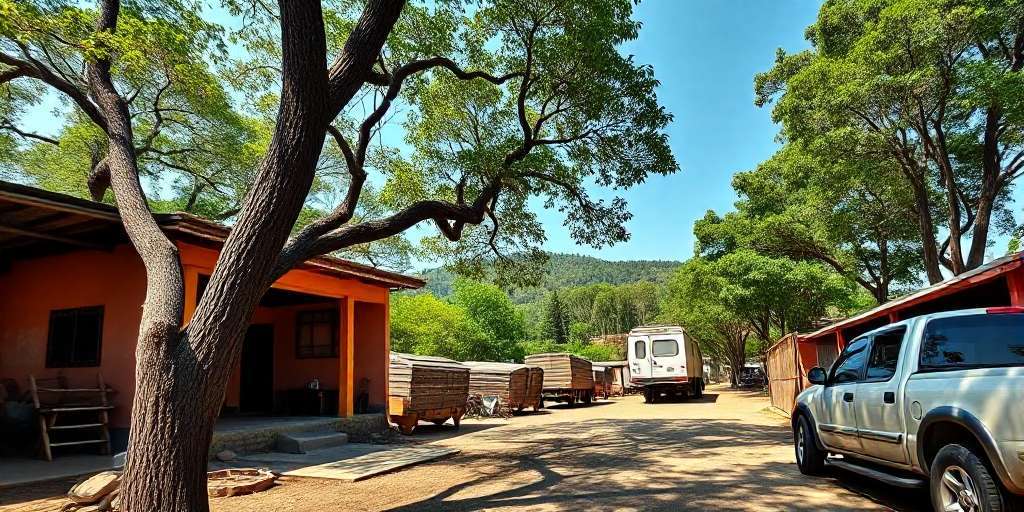
History and Origins of the Camino de Santiago
The history of the Camino de Santiago is deeply rooted in the figure of the apostle St. James the Greater and in the historical and religious context of the Iberian Peninsula. This ancestral route has evolved over the centuries, becoming a symbol of faith and a cultural expression.
The Apostle James the Greater
St. James the Greater, one of the twelve apostles of Jesus Christ, is considered the patron saint of Spain. His evangelizing work spread throughout the peninsula, where he is credited with having preached Christianity in various regions, including Gallaecia, present-day Galicia. Tradition has it that after his death, his disciples decided to transfer his body to the Peninsula to preserve it. This decision marked the beginning of a cult that endures to this day.
Discovery of the Apostle's Tomb
Legend has it that in the 9th century, a hermit named Pelayo had a vision that led him to a hidden burial site on a mountain. The discovery of the tomb was confirmed by Bishop Teodomiro, which led King Alfonso II to make the first documented pilgrimage in 813. This fact consolidated the city of Santiago de Compostela as a center of Christian worship, attracting pilgrims from all over Europe.
Significance of the finding
- The discovery of the tomb allowed the Christian community of the time to establish Santiago as a sacred place.
- Churches and monasteries began to be erected to house and care for the pilgrims who came in search of redemption and miracles.
- This revelation prompted the development of routes by which pilgrims could travel to Santiago, turning the Camino into an important itinerary of faith.
The Medieval Pilgrimage
During the Middle Ages, the Camino de Santiago experienced an unprecedented heyday. Thousands of pilgrims embarked on this journey, carrying with them the hope of spiritual graces, healing or redemption. The motivation for pilgrims ranged from the search for a deeper sense of faith to the fulfillment of personal promises.
Contribution to Christian unity
- The Camino was consolidated as a symbol of Christian unity in Europe, especially during the Reconquest, when the Catholic faith needed to reaffirm itself in the face of external threats.
- Towns and villages along the route prospered thanks to the constant flow of pilgrims, which in turn led to the development of infrastructure such as shelters and hospitals.
- The Codex Calixtinus, a compendium of information about the Camino written in the 12th century, became an essential guide for travelers of the time, detailing stages and accommodations.
Main Routes of the Camino
The routes of the Camino de Santiago are diverse and each offers unique experiences. The following are the main routes that make up this historic pilgrimage.
The French Way
The French Way is the best known and busiest of all the routes. It begins in St. Jean Pied de Port, in the French Pyrenees, and extends for 764 kilometers to Santiago de Compostela. This route crosses several regions of Spain, including Navarra, La Rioja, Castilla y León, and Galicia.
Along the French Way, pilgrims can enjoy an incredible variety of landscapes. From the snow-capped mountains of the Pyrenees to the green plains of Castila, each stage is a visual delight. Many travelers highlight the friendliness of the villages they pass through and the rich culture that can be experienced at each stop.
The Portuguese Way
The Portuguese Way starts in Lisbon and is approximately 620 kilometers to Santiago. This route is less crowded compared to the French Way, which makes it an excellent option for those looking for a quieter experience.
Along its route, the Portuguese Way offers beautiful scenery that blends coast and inland. Pilgrims can enjoy views of the Atlantic Ocean, passing through historic cities such as Coimbra and Porto. It is known for its gastronomy, which makes it not only a spiritual journey, but also a culinary one.
The North Road
Running along the northern coast of Spain, the Camino del Norte stretches for 824 kilometers. It starts in Irun, near the French border, and follows the Cantabrian coastline all the way to Santiago.
This route offers spectacular views of the sea and a mix of coastal and mountain culture. Along the Camino del Norte, pilgrims can enjoy the rich maritime history and typical gastronomy of the regions of Asturias and Cantabria.
The Primitive Way
Considered the original route of the Camino de Santiago, the Primitive Way begins in Oviedo and covers approximately 313 kilometers. This route is known for its natural beauty and its physical challenge, as it presents numerous slopes and narrow paths.
Through forests, mountains and picturesque villages, the Camino Primitivo offers an intimate and less crowded experience. Many pilgrims choose this route precisely because of its connection to the historical legacy of the apostle St. James.
The Silver Route
The Vía de la Plata is one of the longest routes, with a distance of 970 kilometers that connects the south of Spain with Santiago. It starts in Seville and crosses several provinces, such as Badajoz, Cáceres and Salamanca, offering a diverse landscape ranging from plains to mountains.
This ancient Roman road allows pilgrims to enjoy the cultural and historical richness of each town they pass through. The local traditions and the hospitality of the villages make the Vía de la Plata a memorable experience. Its route is less well known, which provides a quieter and more reflective atmosphere for those who choose it.
Cultural and Spiritual Significance
The Camino de Santiago has a profound cultural and spiritual importance that has endured over the centuries. This route has been a melting pot of traditions, beliefs and practices that reflect the diversity of the European cultures that have traveled it.
Impact on Medieval Europe
During Medieval Europe, the Camino de Santiago established itself as one of the main pilgrimage routes, alongside Jerusalem and Rome. The pilgrimage not only offered the possibility of spiritual redemption, but also fostered cultural exchange among pilgrims.
The cities and towns located along the road enjoyed an increase in prosperity thanks to the constant flow of travelers. This phenomenon had several consequences, such as:
- The growth of local infrastructure, including hostels, inns and hospitals to serve pilgrims.
- The enrichment of cultural life, with the interaction of diverse traditions, languages and customs.
- The establishment of annual festivities and celebrations related to the Camino, which cemented the cultural identity of many localities.
Thus, the Camino de Santiago not only impacted individuals seeking a spiritual purpose, but also transformed the communities around it, promoting a sense of unity and collaboration.
The Jacobean Route as a European Cultural Itinerary
Today, the Jacobean Route is recognized as an important European cultural itinerary. This recognition has been endorsed by various international organizations, including the Council of Europe, which declared it a Cultural Itinerary in 1987.
The cultural value of the Camino lies in:
- Its ability to connect diverse cultures and traditions through a shared journey.
- The architectural richness present in the churches, monasteries and bridges that adorn the road.
- The transmission of legends and myths that have remained alive for generations, reinforcing the collective memory of the people.
This cultural background contributes to making the Camino a symbol of diversity and harmony, reflecting the spirit of coexistence that has characterized Europe throughout history.
Influence of the Cathedral of Santiago
The Cathedral of Santiago de Compostela is the spiritual heart of the Camino. Since its construction, it has been considered a sacred place and has played a central role in the religious and cultural life of the region and Europe as a whole.
The cathedral stands out not only for its impressive architecture, but also for the numerous rites and traditions that take place inside. Among the most relevant aspects are:
- The pilgrim's mass, where the intentions of those who have traveled the Camino are celebrated.
- The Botafumeiro, a giant censer used during certain ceremonies, symbolizing the purification of pilgrims.
- Welcoming visitors from all over the world, creating an atmosphere of connection and respect for different beliefs and traditions.
In this way, the Cathedral of Santiago is not only a historical monument, but a place where spirituality and culture intertwine, reinforcing the legacy of the Camino as a transformative journey for thousands of people each year.
The Pilgrim Experience
The pilgrim's journey encompasses much more than the simple act of walking to a destination. It is a personal journey, full of discoveries and connections that transcend the physical.
Travel Arrangements
Before starting the Camino, it is essential to make an adequate preparation. This process begins with the choice of the route, since there are different options, each with its own difficulty and scenery. The choice will depend on the pilgrim's previous experience and the time available.
Once the route has been decided, it is necessary to prepare the luggage. This includes:
- Appropriate footwear: Comfortable, rain-resistant boots or shoes.
- Comfortable clothing: Multi-layered clothing that can adapt to temperature changes.
- Hiking equipment: Walking sticks, light backpack and sleeping bag, if you plan to use lodges outside the common ones.
- Personal hygiene items: Personal kit to maintain daily hygiene.
- Documentation: Pilgrim's credential that allows access to hostels and to obtain the Compostela at the end of the journey.
Mental and emotional preparation is equally important. The Camino can be physically challenging, and it is essential that the pilgrim be ready to face moments of loneliness, fatigue, and sometimes adverse weather.
The Role of the Friends of the Camino Associations
Friends of the Camino Associations play a crucial role in the pilgrim experience. These organizations are made up of passionate volunteers who seek to preserve and promote the Camino tradition by offering support to those who walk it.
The functions of these associations include:
- Information: They provide guides, maps and resources on the different routes.
- Attendance: They offer assistance to pilgrims in case of emergencies or unforeseen events.
- Events: They organize cultural activities and celebrations throughout the year, strengthening the community.
- Route maintenance: They collaborate with local authorities to ensure that roads are in good condition and well marked.
Thanks to these efforts, pilgrims can enjoy a richer and safer experience on the Camino.
Logistics: Shelters and Signaling
Logistics play a fundamental role in the pilgrim's experience. Along the routes, there are multiple hostels that allow walkers to rest and recuperate. These hostels can be public or private, and usually offer basic services such as
- Beds: Bunk beds in shared rooms, making it easier to meet other pilgrims.
- Dining room: Spaces where meals are served, providing a social environment.
- Bathrooms: Basic services for personal hygiene.
- Laundry: Laundry facilities.
The signage along the Camino is clear and consistent. Yellow markings, arrows and information posts are used to guide pilgrims, ensuring that they do not lose their way. The paths are designed to offer an accessible experience, allowing people of different ages and abilities to walk them safely.
The supply of hostels and the quality of signage contribute significantly to making pilgrims feel comfortable and accompanied on their spiritual and cultural journey. These well-kept logistics allow the Camino experience to be more than just a path to walk; it is a journey of personal transformation and human connection.
The Way of St. James Today
Today, this route has gained new momentum, becoming both a tourist and spiritual phenomenon. Its appeal encompasses various types of pilgrims, from those seeking a journey of introspection to those who wish to learn about an enriching part of European history and culture.
Increase in the Number of Pilgrims
Interest in the route has increased markedly in recent decades. In 2019, a record 347,578 pilgrims were recorded, a considerable increase over previous years. This growth can be attributed to several factors, including:
- The desire for spiritual connection and self-exploration.
- Tourism promotion at national and international level.
- The creation of tourist packages that facilitate the journey.
- The positive testimony of those who have completed the tour, encouraging an imitation effect.
This boom has led to more people of different nationalities and demographics joining this transformative experience.
Economic and Social Impact
The revival of the Camino de Santiago has had a significant impact on the local economy in the regions along the route. Pilgrims contribute not only to the economy of the cities, but also to that of the small towns. The areas that are part of the route experience growth in various sectors, such as:
- Tourism: Increased demand for lodging, restaurants and tourist services.
- Local commerce: Increase in sales of handicrafts and souvenirs related to the Camino.
- Job creation: The need for tour guides, lodge maintenance and support services has generated new job opportunities.
This growth not only helps revitalize communities, but also fosters a sense of belonging and cultural pride among locals, who see the value of their traditions through the arrival of pilgrims.
Technological Innovations and Applications
As technology has advanced, the Camino de Santiago has also evolved. Mobile applications have revolutionized the way pilgrims plan and experience their journey. Among the most notable innovations are:
- Planning applications that allow users to calculate routes and times, as well as find available accommodation.
- Applications that provide information about the history and culture of each stage of the Camino, enriching the pilgrim's experience.
- Social platforms where pilgrims can share their experiences, photograph their journey and connect with other travelers.
These tools have made the experience more accessible and attractive to people of all ages, modernizing the tradition without losing its essence.
The Way of St. James in Film and Literature
The depiction of the Camino de Santiago in film and literature has enriched its historical and cultural narrative. These works reflect both the pilgrims' experience and its spiritual resonance, offering diverse perspectives on this iconic route.
Featured Films on the Camino
Film has served as a powerful medium to showcase the adventures and challenges faced by pilgrims. Some films that highlight this theme include:
- The Roads of SantiagoThis documentary explores various routes, providing a context for the history and tradition of the Camino. The personal stories of the pilgrims provide a moving account of their journey.
- El CaminoStarring Martin Sheen, this film tells the story of a father who makes a pilgrimage in honor of his deceased son. Throughout his journey, he faces his own struggles, which leads him to a process of personal transformation.
- In the Footsteps of the St. JamesThis production focuses on the experiences of several pilgrims on the French Way, portraying not only the landscape, but also the human interactions that arise during the journey.
- The WayThis film presents an emotional portrait of the Camino, emphasizing themes of love, loss and redemption. The protagonist's adventure leads him to discover not only the landscape, but also his own life.
Novels Inspired by the Pilgrimage
Novels that focus on the Camino de Santiago have captured the interest of many readers. These works not only address the physical journey, but also the introspection and self-discovery that occurs along the way. Some of the most notable novels include:
- The Pilgrim by Paulo Coelho: This book narrates the author's spiritual quest through the Camino, reflecting the challenges and learnings that arise during the journey. The story invites reflection on life and the search for purpose.
- The Shadow of the Wind by Carlos Ruiz Zafón: Although it does not revolve exclusively around the Camino, a significant part of the plot imparts references to this emblematic place. The exploration of the city of Barcelona and the connections with the Camino are undeniable.
- The Companion by José Luis Cuerda: This narrative focuses on the life of a young man who is at a breaking point and decides to undertake the road. Throughout the novel, stories of other characters are interwoven, showing different motives for making the pilgrimage.
- The paths of the forest by Jose Carlos Mainer: This illustrative work offers an in-depth look at the paths, legends and spirituality that permeated the route, highlighting the importance of the dialogue between the past and the present.
Frequently Asked Questions about the Camino
The Camino has raised many questions among those planning to undertake the journey. The following are the most common questions that often arise about this experience.
How to Plan the Route?
Route planning is critical to ensure an enriching experience. Considering the following aspects can help in this process:
- Route selection: There are several options, such as the French Way, the Portuguese Way and the Northern Way, each with its own levels of difficulty and attractiveness. It is important to research and choose the one that best suits your physical condition and personal desires.
- Duration of the trip: Determining how many days you have available for walking is essential. This will influence the daily distance to be covered and the places where you will spend the night.
- Required equipment: Having the right equipment, such as comfortable and light footwear, appropriate clothing for the climate and a practical backpack, is vital. The distances and terrain conditions require a good level of preparation.
- Lodging reservations: Although there are hostels and lodging options along the routes, making reservations in advance can avoid inconveniences, especially during high pilgrimage seasons.
Costs Associated with Travel
The budget for the Camino can vary considerably according to the preferences of each pilgrim. Considering the following elements helps to have a clearer idea of expenses:
- Lodging: Prices in hostels are usually more affordable compared to hotels. The cost per night in a hostel can range from 10 to 25 euros, depending on location and amenities.
- Meals: Pilgrims can choose to carry food for the Camino or eat in local restaurants. This expense can also vary between 15 and 30 euros per day, depending on the tastes and options chosen.
- Transportation: Some trips, such as travel to the beginning of the route or from the end of the route back to the starting point, may involve additional costs. Trains and buses are usually viable and affordable options.
- Other expenses: They include the purchase of equipment or supplies, as well as possible treatments for injuries or physical discomforts that may arise along the way.
Tips for First Time Pilgrims
For those embarking on their first experience as pilgrims, some tips can be of great help to make the most of the journey:
- Walking at a relaxed pace: It is essential not to rush and allow the body to adapt to the activity. Listening to the body and making regular stops can prevent injury and exhaustion.
- Adequate hydration: Staying hydrated is crucial. It is recommended to carry a bottle of water and drink frequently, especially on hot days.
- Be flexible in planning: Weather conditions and fatigue can alter plans. It is important to be adaptable and be willing to change the routine if necessary.
- Establish reasonable goals: Setting achievable goals, such as the number of kilometers per day, helps maintain motivation. Enjoying the views and the company of other pilgrims can enrich the experience.

